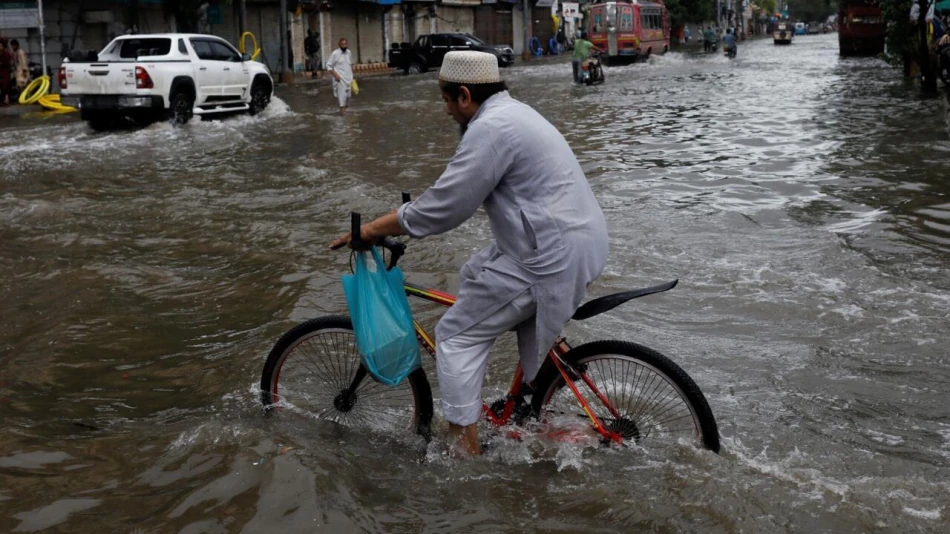
Heavy Monsoon Floods Claim 234 Lives in Pakistan, Triggering Urgent Relief Efforts
Pakistan's Deadly Monsoon Season Claims 234 Lives as Climate Patterns Intensify
Pakistan is grappling with an exceptionally severe monsoon season that has killed 234 people and injured 596 others since late June, highlighting the country's growing vulnerability to extreme weather events. The latest casualties include three deaths and 15 missing persons from landslides in the northern Gilgit-Baltistan province, underscoring how climate change is transforming traditional weather patterns into deadly disasters.
Northern Regions Bear the Brunt of Destruction
The mountainous Gilgit-Baltistan province has emerged as a particular hotspot for monsoon-related disasters. Landslides triggered by torrential rains swept away several tourist vehicles, prompting ongoing rescue operations to locate missing persons. The region's infrastructure has suffered extensive damage, with dozens of homes, bridges, and critical facilities destroyed or compromised.
Local authorities describe the current monsoon season as "unusual" in its intensity and duration, reflecting broader shifts in South Asian weather patterns that meteorologists have been tracking for several years.
A Pattern of Escalating Climate Disasters
This year's monsoon devastation follows Pakistan's catastrophic 2022 floods, which affected over 33 million people and submerged one-third of the country. The recurring severity of these events signals a troubling trend where Pakistan, despite contributing less than 1% of global greenhouse gas emissions, faces disproportionate climate impacts.
The Pakistan Meteorological Department has issued warnings for continued flooding and landslide risks across northern and eastern regions, suggesting the crisis may worsen before the monsoon season concludes in September.
Economic and Social Implications
Pakistan's repeated climate disasters create a vicious cycle of economic strain and social disruption. The country, already grappling with a severe financial crisis and IMF bailout negotiations, faces mounting costs for disaster response and infrastructure reconstruction. Each monsoon season now threatens to undo development gains and push vulnerable populations deeper into poverty.
The tourism industry in northern Pakistan, a crucial source of foreign currency, faces particular challenges as scenic mountain regions become increasingly dangerous during monsoon months. The destruction of transportation infrastructure further isolates remote communities and complicates economic recovery efforts.
Regional Climate Reality Check
Pakistan's monsoon crisis reflects broader regional trends affecting South Asia. India, Bangladesh, and Nepal have all experienced intensified monsoon patterns in recent years, with traditional seasonal predictions becoming less reliable. Climate scientists attribute this to changing ocean temperatures and shifting atmospheric circulation patterns linked to global warming.
Unlike wealthier nations that can invest heavily in climate adaptation infrastructure, Pakistan's limited resources constrain its ability to build resilience against increasingly unpredictable weather. The country's mountainous terrain and dense river systems make it particularly susceptible to flash flooding and landslides when rainfall exceeds historical norms.
As rescue operations continue and meteorologists warn of further risks, Pakistan's monsoon crisis serves as a stark reminder of how climate change transforms natural weather patterns into humanitarian emergencies, particularly for nations with limited adaptive capacity.
Most Viewed News

 Sara Khaled
Sara Khaled






